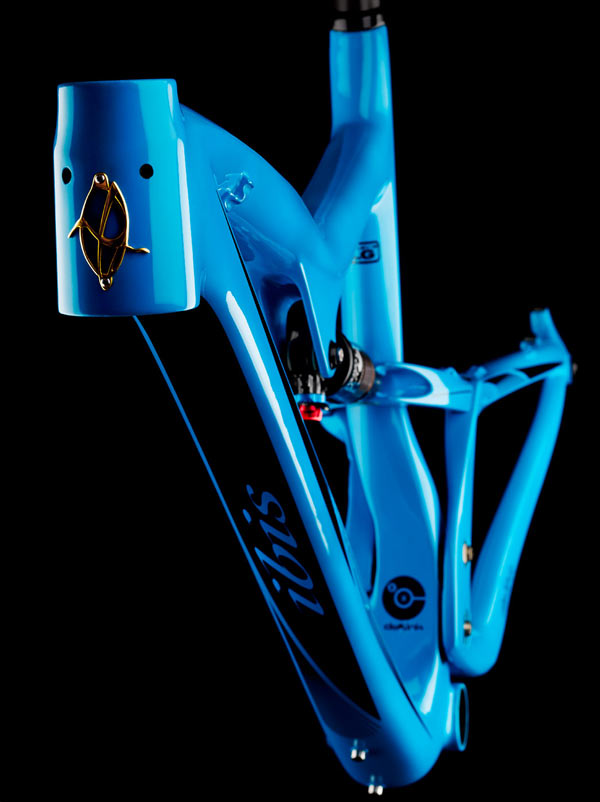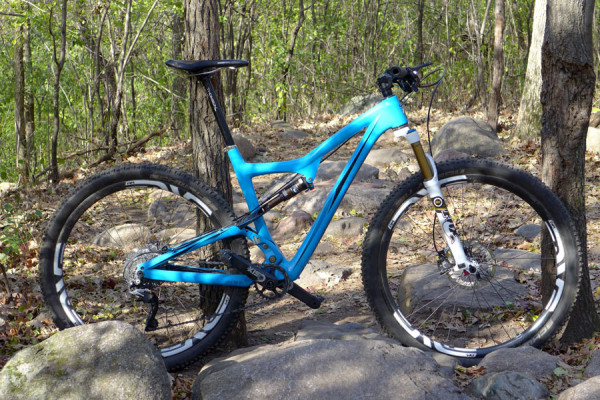The Ripley might be one of the most anticipated bikes in recent memory, first being leaked at Eurobike in 2010, and finally making it to market after some unfortunate setbacks the company faced. Embracing the extra time they had, they spent it on testing and R&D, also making some changes to the construction, travel, geometry and moving parts of the suspension during this time.
Finally hitting the market in 2013, Ibis was still ahead of the competition, delivering the first suspension bike that used two eccentrics for links, and no linkages at all. This makes the bike look elegantly simple from the outside, even provoking a person met on the trail to ask “why does that single pivot bike have DW-Link stickers on it?”
The DW-Link 2XC dual eccentric design makes the bike complex to manufacture, so the question is whether it and all the delays pay off…
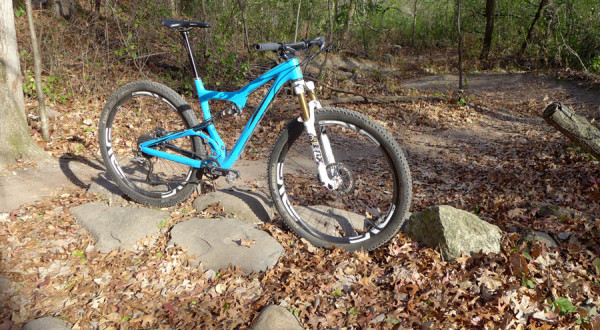
RIDE
To put the Ripley to the test, it was ridden on the tight, bermed singletrack trails of Minnesota and Wisconsin. Most riding in this area is fast, with hard braking into tight corners, and then hard acceleration out of the corner. Climbs and descents are typically IMBA-spec grades in very short, but very constant cycles. Amongst all of this are often short, but difficult sections of rocks or roots where you want the suspension ready to take the hits.
Suspension bikes designed by Dave Weagle typically have a lot of anti-squat built into the design, and they are intended to be used with the shock wide open. This suspension trait is intended to eliminate the need to use Climb or Trail settings, and ride continuously in an open shock setting such as Descend. This is important on the midwestern trails since we do not settle into a climb for an hour where we can switch the shock, and then put it back when we are ready for the long descent. The rapid back and forth between climbing and descending would lead to a lot of shock level flicking, and DW-Link eliminates the need for all that. With this in mind, the entire test was conducted with the Fox Float Factory CTD shock in the Descend position.
FRAME CONSTRUCTION
The carbon fiber Ripley frame weighs just 5.2lbs, but is built solid. Throughout the test, the bike remained very quiet, something we were paying close attention to with the unique eccentric pivot design and clevis-style shock link. With that many moving parts riding on 8 bearings and 4 bushings, we expected some noise, but were pleasantly surprised that it stayed quiet.
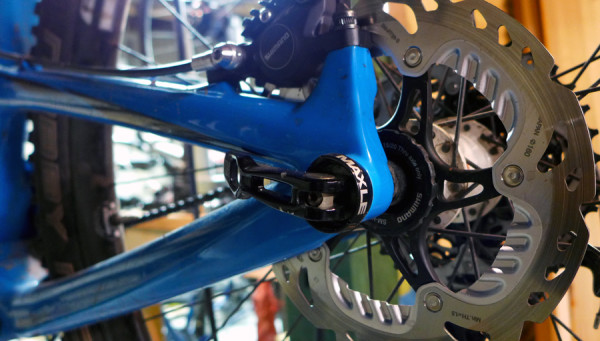
The front end of the bike is nice and stiff, without any wandering, even with a smaller 32mm legged fork. The rear end, held tight with a 12×142 Rockshox Maxle, did have a slight tendency to allow the wheel to flex side to side when pushed hard into a hairpin corner, but not terrible. At once instance of noticing the flex, one of the pivots was found to be slightly loose, and tightening it up took care of the issue. Keeping a close eye on the pivot hardware from then on, we found no further instances of loosening. One downside of 2XC is that a lot of force is going into one small area on the seat tube, possibly allowing a bit of rear end movement as the seat tube flexes.
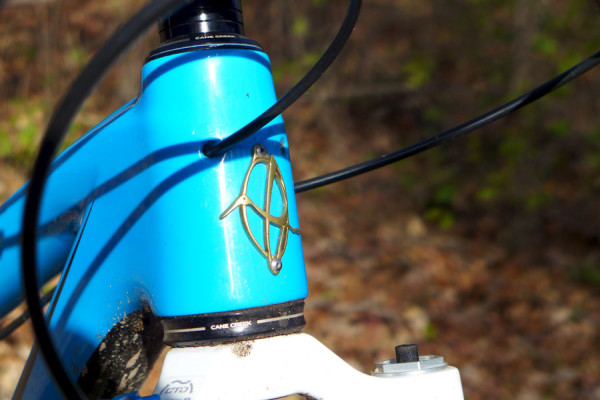
DESIGN
It goes without saying, the frame is beautiful. When Ibis first released the Mojo with designer Roxy Lo, they changed the thoughts of the entire industry about how industrial design could be used on a bicycle. This idea carries forward in the Ripley, with extremely well placed lines and curves that are hard to explain, but please the eye. Ibis had a lot on the line after the Mojo, as high expectations were set for the re-imagined brand, and the long period of silence until the Ripley only magnified that.
The Ripley has a real metal head badge that is riveted on. A small detail, but it shows Ibis cares about where they have come from, and the quality they present. The art of the headbadge is slowly being lost, so the presence of this detail reminds us that Ibis has been to this party before.

There is not a simple round tube anywhere on the bike. Even the seat tube, while round inside to take a seatpost, takes on a pointed oval shape to blend into the top tube. As expected, every surface has been evaluated for appearance and performance, making for a very visually complex structure up close, yet appearing simple when standing a few feet away.
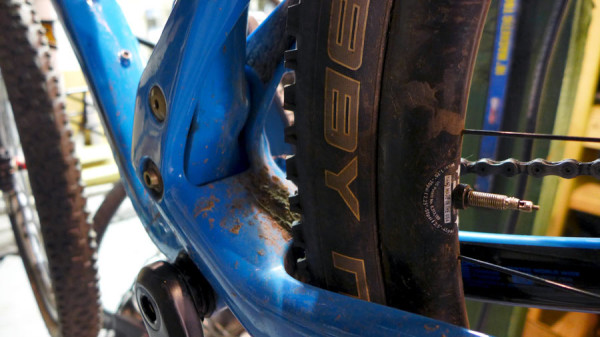
The only fault with the design is that as the swingarm comes together up near the eccentric pivots, it creates a shelf. The tire is spinning right behind this shelf, and it liked to collect mud, leaves and rocks.
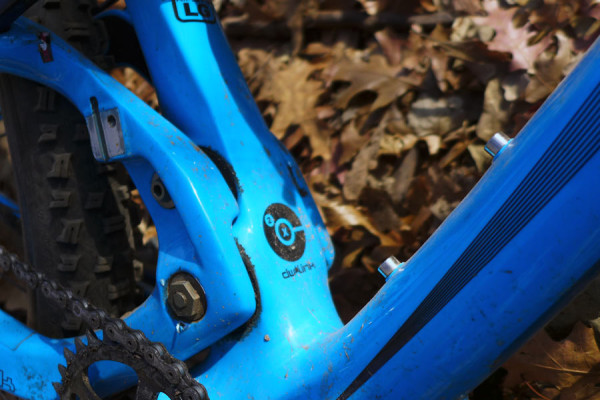
DW-Link 2XC
For the Ripley, Ibis spent years in development with Dave Weagle to bring out a new version of his famed DW-Link. Utilizing two eccentrics instead of two short links, Dave was able to finely tune the kinematics of the design, and the small stature of the parts reduces overall weight. DW-Link is all about handling mass transfer through proper kinematic design, and the 2XC version does this just as well as regular DW-Link

GEOMETRY
Geometry is where a lot of the talk of the Ripley has been. While the Ripley took a long time to come to market, 29er geometry was changing fast, and even when it was finally released, some said the geometry was already outdated. Even Ibis has said that one of the updates they made when switching factories mid-project was to change the head tube angle.
Ibis is one of the few companies to come out and explain it in depth, and do it well, so like they say mechanical trail is one of the most important numbers to determining how a bike rides. The Ripley has 80mm of trail, which is a bit behind the trends as even XC bikes have been venturing into the 85mm territory recently, and 120mm travel bikes are more commonly in the 90mm range. The Ripley with a 140mm fork gets to 90mm of trail, but all testing on this one was done at 120mm.
Our test bike is a size Large, which has a 605mm effective top tube length. Again, changes and trends in 29ers have brought most 29ers in size Large into the 620-630mm range. Ibis does not provide a recommended stem length, so the test bike was built with a 90mm stem, already a bit longer than normal for a trail bike. Altogether, this made for a cockpit almost an inch and a half shorter than a similar bike.
One very impressive number is the chainstay length. 442mm is shorter than the majority of 29er suspension bikes out there. The overall wheelbase ends up over 2″ shorter than a competing 120mm 29er.
Geometry numbers don’t mean much until you get them on the trail. Thankfully, the short top tube length and short trail numbers meant nothing on the trail. This bike absolutely slays IMBA-spec flowy singletrack. It does not ride at all like the numbers suggest, or it could be just that no matter how much you scrutinize the numbers, they don’t mean anything until you get on the dirt. There is always a balance between all points of the geometry chart, and Ibis has found that balance.
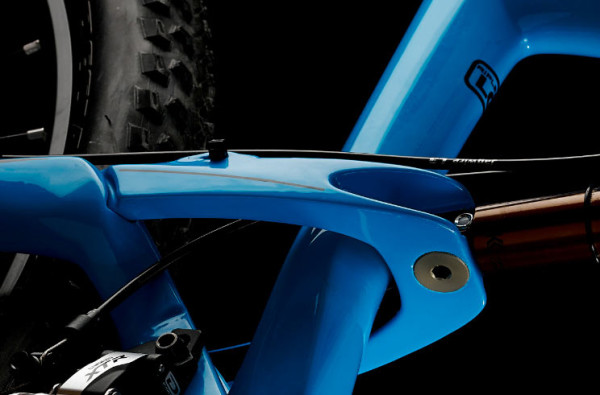
FINDINGS
 When you spend $2,900 on a frame, everything is expected to be perfect. Visually, the frame must be stunning and exciting. At this price point, we are talking way beyond simple functionality, the bike must appeal to the buyer in every possible way. The Ripley is this bike, it can actually be enjoyed by simply looking at it. Getting to ride it is just a bonus on top of that. Or vice versa.
When you spend $2,900 on a frame, everything is expected to be perfect. Visually, the frame must be stunning and exciting. At this price point, we are talking way beyond simple functionality, the bike must appeal to the buyer in every possible way. The Ripley is this bike, it can actually be enjoyed by simply looking at it. Getting to ride it is just a bonus on top of that. Or vice versa.
This review is of the Ripley as a frame, since our test bike was not one of Ibis’ offerings. Built quite high-end, it came in at a very impressive 25lbs even, without pedals.
The feel of the Ripley on trail is superb. The small bit of rear end flex was not any concern during normal riding. The test bike with a 32mm legged fork at 120mm of travel made for an excellent balanced midwest singletrack bike. Some companies may take that as a backhanded compliment, but if you really dig into what most riders want, it’s a balanced, confident bike that can be used for more than one purpose. Most bikes intended for western trails are slacker and have more travel at the front, being a bit more biased for descending. The Ibis could definitely be this, when set up with a 140mm travel fork as they allow, but in the mode of this test bike, we found an excellent bike intended for equal amounts of climbing, descending, flow trail and tight singletrack.
The Ripley has been accused of being outdated. For instance, it lacks ISCG tabs. Look at it differently, and see an XC bike that pedals better than bikes with less travel, but has 120mm ready and waiting when it’s time to get rad. The quicker geometry made it a perfect bike for the groomed flow trail that is popping up all over the nation, and the overall balance of the various geometry points made for a bike with a short wheelbase that is extremely easy to handle. If you are a one-bike sort of person, look very hard at the Ripley, it would be the top of the list if the choice were to have one bike to slay all.
